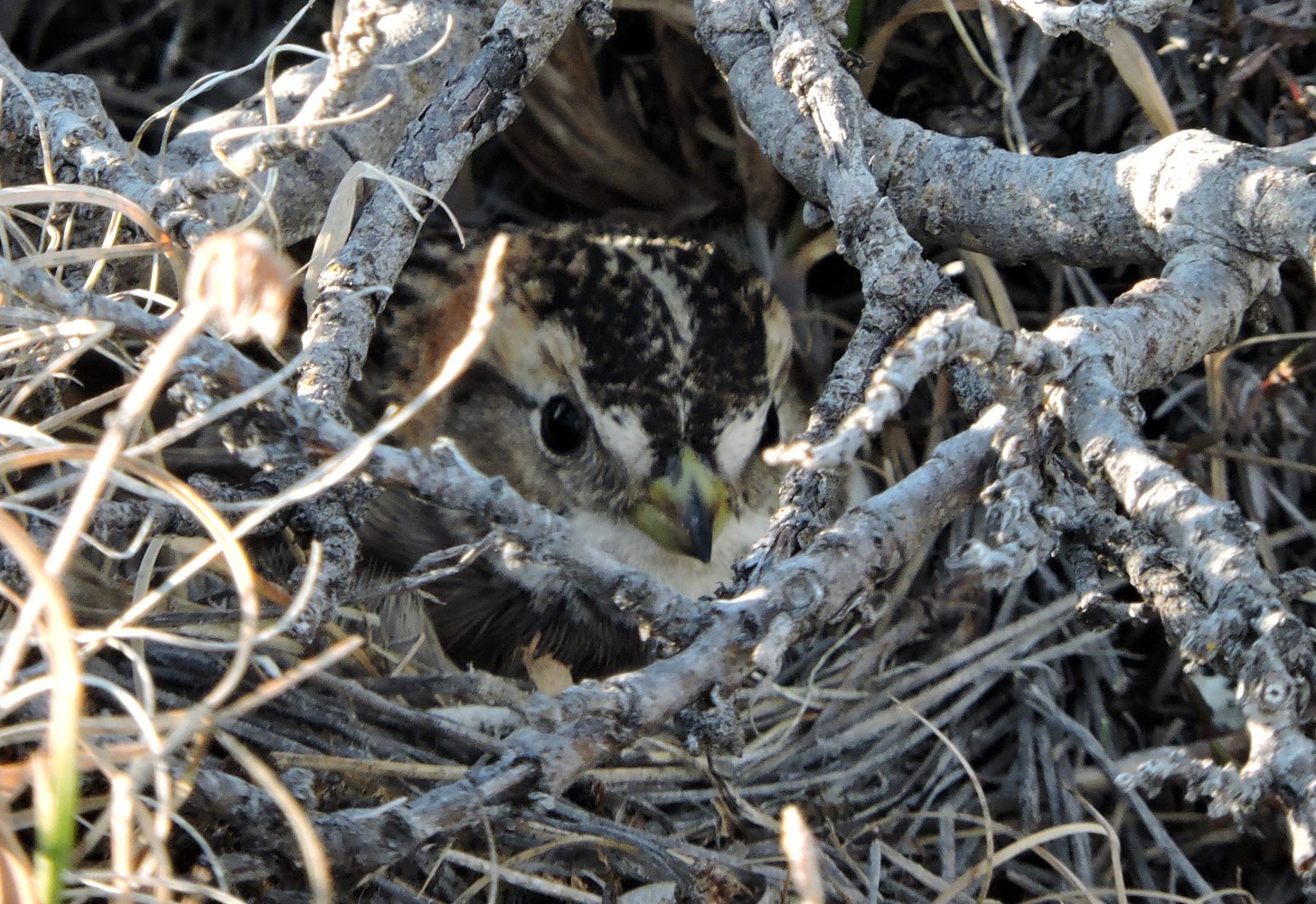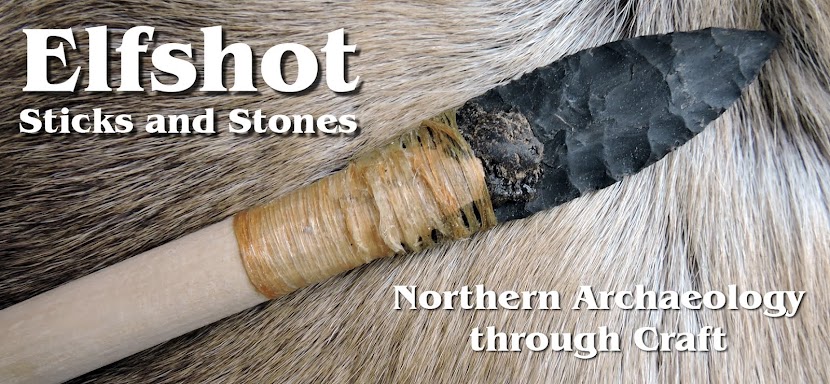 |
| A tent ring after excavation. |
Wednesday, July 30, 2014
Monday, July 28, 2014
Arctic Badlands
 |
| Can you spot the arctic hare? |
 |
| This run off channel has slowed to a trickle, but for a few weeks in the spring it'll roar with snow melt. |
 |
| I don't honestly know if calling this a rock is correct, or if its just highly compacted sediments. There doesn't seem to be much holding the sand and gravel together. The features are very fragile. |
Photo Credits: Tim Rast
Friday, July 25, 2014
Wednesday, July 23, 2014
Lemming
 Lemming populations go through a boom and bust cycle. We saw lots of them in 2011, but numbers were low over the past couple of summers. It looks like they are experiencing a boom again. That usually leads to a corresponding boom in the predatory animals and birds that rely on the lemmings for food.
Lemming populations go through a boom and bust cycle. We saw lots of them in 2011, but numbers were low over the past couple of summers. It looks like they are experiencing a boom again. That usually leads to a corresponding boom in the predatory animals and birds that rely on the lemmings for food.Photo Credits: Tim Rast
Monday, July 21, 2014
Little Cornwallis Island, NWT 1994
 Not long after arriving in the field a few weeks ago, I received a surprise e-mail with a motion blurred photo of me attempting to juggle (right). The picture was taken in 1994 on Little Cornwallis Island in what is now Nunavut, although it was still part of the Northwest Territories at the time. I was 19 in the picture and this was my very first field season in the Arctic. We were excavating Late Dorset sites and I kept a journal, but I didn't have a camera with me. Another student, Hugh, was an avid photographer and took several rolls of photos during the season. I hadn't heard from Hugh in more than a decade, but when I thanked him for sending the first photo, he sent me a folder packed with images from the summer. He said I could share them here, so here are the first few...
Not long after arriving in the field a few weeks ago, I received a surprise e-mail with a motion blurred photo of me attempting to juggle (right). The picture was taken in 1994 on Little Cornwallis Island in what is now Nunavut, although it was still part of the Northwest Territories at the time. I was 19 in the picture and this was my very first field season in the Arctic. We were excavating Late Dorset sites and I kept a journal, but I didn't have a camera with me. Another student, Hugh, was an avid photographer and took several rolls of photos during the season. I hadn't heard from Hugh in more than a decade, but when I thanked him for sending the first photo, he sent me a folder packed with images from the summer. He said I could share them here, so here are the first few...Friday, July 18, 2014
Snow Geese
 The site we are working on now is between two rivers and we are surrounded by pairs of snow geese. The parents are molting and the babies can't fly so they spend the days walking up and down the river banks, feeding, and paddling in the water. The pairs of adults tend to travel in proximity to each other, but they are very defensive if another adult wanders too close. They charge, honk, and flap their wings to drive the interloper away.
The site we are working on now is between two rivers and we are surrounded by pairs of snow geese. The parents are molting and the babies can't fly so they spend the days walking up and down the river banks, feeding, and paddling in the water. The pairs of adults tend to travel in proximity to each other, but they are very defensive if another adult wanders too close. They charge, honk, and flap their wings to drive the interloper away. |
| The wings look particularly ragged as the geese molt. |
 |
| The river mud gives some of the adults red heads. At least, I hope its mud. Polar bears, foxes, and ermines often have red snouts, too, but for completely different reasons. |
Wednesday, July 16, 2014
Ground Slate Lance Head
Monday, July 14, 2014
Friday, July 11, 2014
Wednesday, July 9, 2014
A section of arrowshaft
 |
| You can see the tapered end on the right. A matching end on the next section of arrow could have been lashed in place with sinew. |
Monday, July 7, 2014
Dorset Palaeoeskimo Shaman's Mask is Angry
This is the second of two complete wooden masks found at the Button Point site on Bylot Island, Nunavut. This one looks much more angry or aggressive than the other. You can see pegs on the upper lip and over the eyes where fur eyebrows and mustache would have been attached to the mask. The video below begins by zooming out of one of the suspension holes on either side of the mask where some sort of cord or rope would have been secured to tie the mask to the wearer's face. Both masks are in the collection of the Canadian Museum of History.
Photo Credits: Tim Rast
Photo Credits: Tim Rast
Courtesy of the Canadian Museum of History
Friday, July 4, 2014
Archaeology at Stock Cove
Coming up next Wednesday evening, July 9th, Don Holly and Chris Wolff will be talking about their ongoing research at Stock Cove. The talk takes place in Sunnyside, Newfoundland and Labrador at 7 PM. More details on the NLAS blog.
Photo Credits: NLAS, Chris Wolff, Don Holly
Wednesday, July 2, 2014
Lapland Longspur
 |
| Beautiful plumage |
 |
| Lapland Longspur Calcarius lapponicus |
 |
| This nest was built on the ground under the gnarled branches of an arctic willow. It has six eggs. |
 |
| The female is less flashy than the male, but she's good at giving you the stink eye if you get too close to her eggs. |
Photo Credit: Tim Rast
Subscribe to:
Posts (Atom)


























